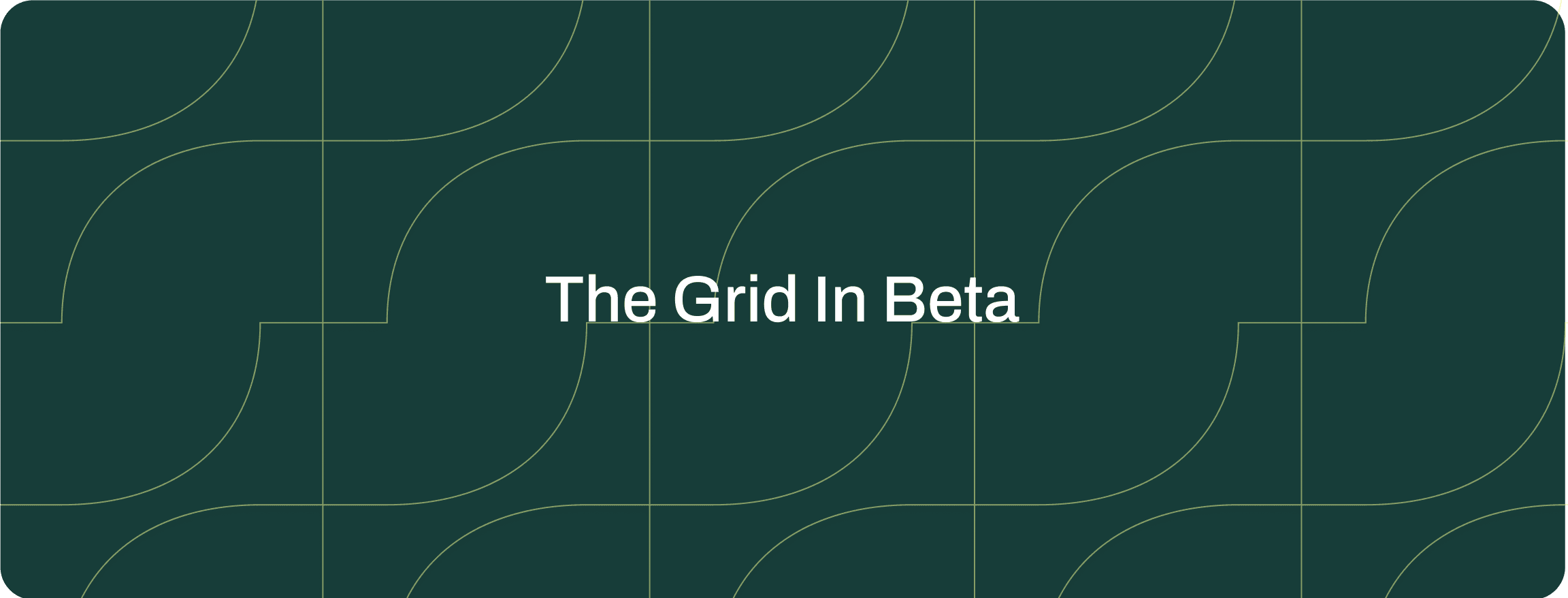News
The Grid in Beta: Bridging the Web3 Trust Gap
Jonathan Knegtel
Nov 12, 2024
The Grid launches its beta endpoint today 12 November 2024, with over 800 projects, 870 products, and 280 assets already indexed. These numbers only tell part of the story.
If you want to pull data from the endpoint, learn about that here or see the data at explorer.thegrid.id
Why The Grid matters
We founded this project with a mission and vision to: “Be the Node of Truth for the Web3 ecosystem and enable the world to migrate to Web3.”
That’s a big statement, and that’s because Jordan and I both believe in blockchain’s power to transform. As blockchain technology, and by extension Web3, becomes part of our daily lives, decisions about Web3 projects have real consequences for users — decisions with potentially long-term impacts. Yet today, there's a critical "Trust Gap": the disconnect between blockchain projects and the platforms that share information about them.
This Trust Gap creates a paradox. While blockchain enables trustless transactions (because the information is recorded and verified publicly), users still must rely on multiple third-party platforms to understand the projects they're interacting with. This leads to fragmented, inconsistent, and often outdated information on platforms and in turn, misinformation sent to users as there is no standard way for projects to provide this ‘informational data’ (metadata).
Consider Uniswap. Different platforms variously tag it as "DeFi," "DEX Token," or "Exchange," mixing product and asset classifications, while the UNI token is a governance asset. With Uniswap's recent announcement about its Optimism L2 Unichain, this fragmented data becomes even more problematic because the mix of Uniswap products gets even more complex.
As another example, try finding a wallet or RPC provider instead of a token. You'll hit two immediate problems: everything is lumped under generic categories like 'infra', and much of the data only covers assets.
No one is focusing purely on metadata. Each platform and data aggregator has built their own taxonomy in isolation. They collect data according to their own standards, with some even charging projects "express service" fees just to keep information current.
The outcome is that discoverability in Web3 is broken — you can't reliably find what you need or trust what you see.
What The Grid does to bridge the gap
The Grid bridges this Trust Gap and discoverability problem with a standardised metadata layer that brings clarity to Web3 information. While price feeds tell you what something costs, and on-chain data shows what happened, The Grid tells you what something is.
We introduce a multi-dimensional standard that separates Web3 data into distinct components:
Profile: What problem are they working on
Products: What they built and where it's deployed
Assets: What they issued and how it's used
Entities: What organisation is behind the profile (if applicable)
For Web3 projects, this means:
A validated profile that accurately represents your project's structure
Control over how your project’s information appears across the ecosystem
A standardised way to manage updates across multiple platforms
How we do it
The Grid maintains data quality through:
Automated collection using AI
Human verification: Our team double-checks and validates every entry against official sources
Standardised classification: Consistent taxonomies across projects, products, and assets
Clear relationships: Mapping connections between different components
Regular updates: Keeping information current as projects evolve
Audit logs: We keep internal logs (much like a blockchain) of every data transaction in our database
A note on our technology: We use AI extensively in our backend systems to enhance data validation and processing. We focus on results, not buzzwords, around the use of AI.
While we have a roadmap for data provenance verification, our current beta phase prioritises refining our data collection and validation methods.
Who are our users?
We are building a dataset to serve every UI in Web3. If you work on a product that shows pricing or on-chain data, you most likely have a use case for our data. Here are some examples:
Wallets → Show lists of useable applications to your users, automatically remove ones where support has ended
Block explorers → Show more information about assets and the asset issuers
dApp explorers → Provide reliable metadata about protocols and their deployment status
Institutional research tools → Access verified entity information and relationship mappings
DEX aggregators → Display accurate protocol statuses and supported assets
Analytics platforms → Enrich on-chain data with standardised project metadata
Developer tools → Integrate verified contract addresses and deployment information
Trading terminals → Show comprehensive protocol and asset relationships
Data providers → Complement pricing and on-chain data with structured metadata
Why a Node of Truth for Web3?
The Grid solves the Trust Gap by providing validated Web3 project metadata. As a neutral third party, we’re building toward open, community-owned standards, open data, and Web3-native collaboration.
Get started:
Browse the directory: explorer.thegrid.id
Claim your profile: /claimprofile
Review documentation: docs.thegrid.id
A note about our future standard
You can find our thinking here: Web3da.org. It is not our intention to create a standard that everyone adopts point blank. This standard aims to intend on creating a form ‘meta standard’ that includes and respects other standards to act as a graph of information.
Join us in building a more transparent and trustworthy Web3 ecosystem.
Update (November 13, 2024):
We've released the most comprehensive market map of the Solana ecosystem to date, featuring over 410 validated projects across 21 sectors. For more details, view the article on X.
You can also go direct to the high-resolution version of the Solana market map.
The map is powered by The Grid's beta API, showcasing how standardised metadata brings clarity to complex Web3 ecosystems like Solana.

